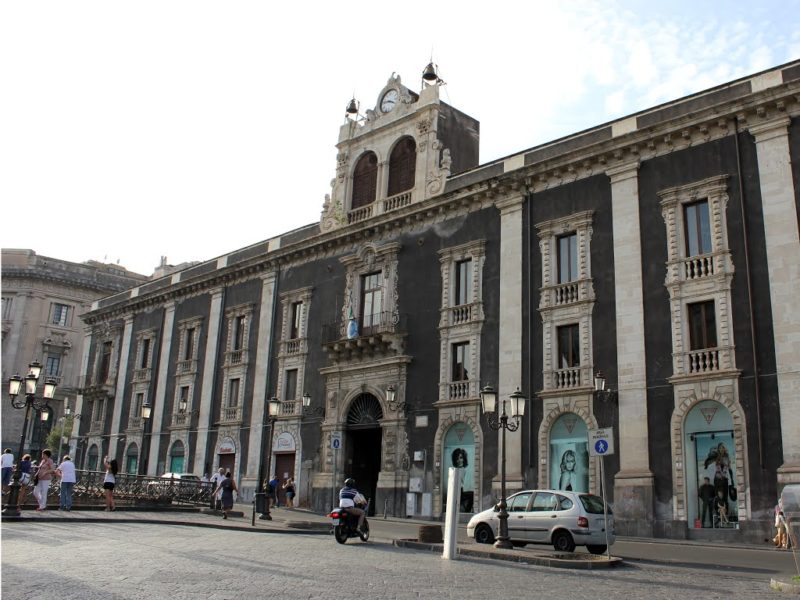Tezzano Palace
Palazzo Tezzano is a large historic building in the center of Catania in Piazza Stesicoro.
The construction of Palazzo Tezzano began in 1709 on land owned by the count and doctor Niccolò Tezzano at his expense [1]; it was then donated by him to the city of Catania, then severely wounded by the earthquake of 1693 to allocate the hospital of San Marco. The transfer of the hospital to the building designed by Alonzo Di Benedetto took place between 1720 and 1727. In 1837, also due to the economic difficulties of the hospital [2], a part of the building was rented by the Office of the Intendency Bourbon to house the civil status archive. A few years later, around 1844, some sections of the General Prosecutor's Office and the Criminal Chancellery were also installed in the building in rooms located on the side of Via Stesicorea (then name of the current Via Etnea). In those years the opportunity arose to move the hospital to another location and to transform the entire building into a General Court. But the projects ran aground following the revolutionary uprisings of 1848 and the hospital was transferred only between 1878 and 1880 to the premises adjacent to the Benedictine Monastery of San Nicola where it changed its name to Vittorio Emanuele II hospital.
After the transfer of the hospital, Palazzo Tezzano remained the seat of the Court until the construction of the new headquarters in Piazza Giovanni Verga, completed and inaugurated in 1953.
The building, of imposing appearance, is quadrangular in shape with an internal courtyard that the building surrounds forming a "U" with the interruption to the north. It is accessed from Piazza Stesicoro through a large main door, located in the center of the main façade, dominated by a monumental balcony above which a clock towers. The façade is symmetrical and is divided in the sense of height by false columns in light stone which, contrasting with the basalt gray tone of the plastering, create a subdivision into five architectural units on each side.
Inserted in the list of architectural heritage bound under Legislative Decree 42/2004
download decree:




